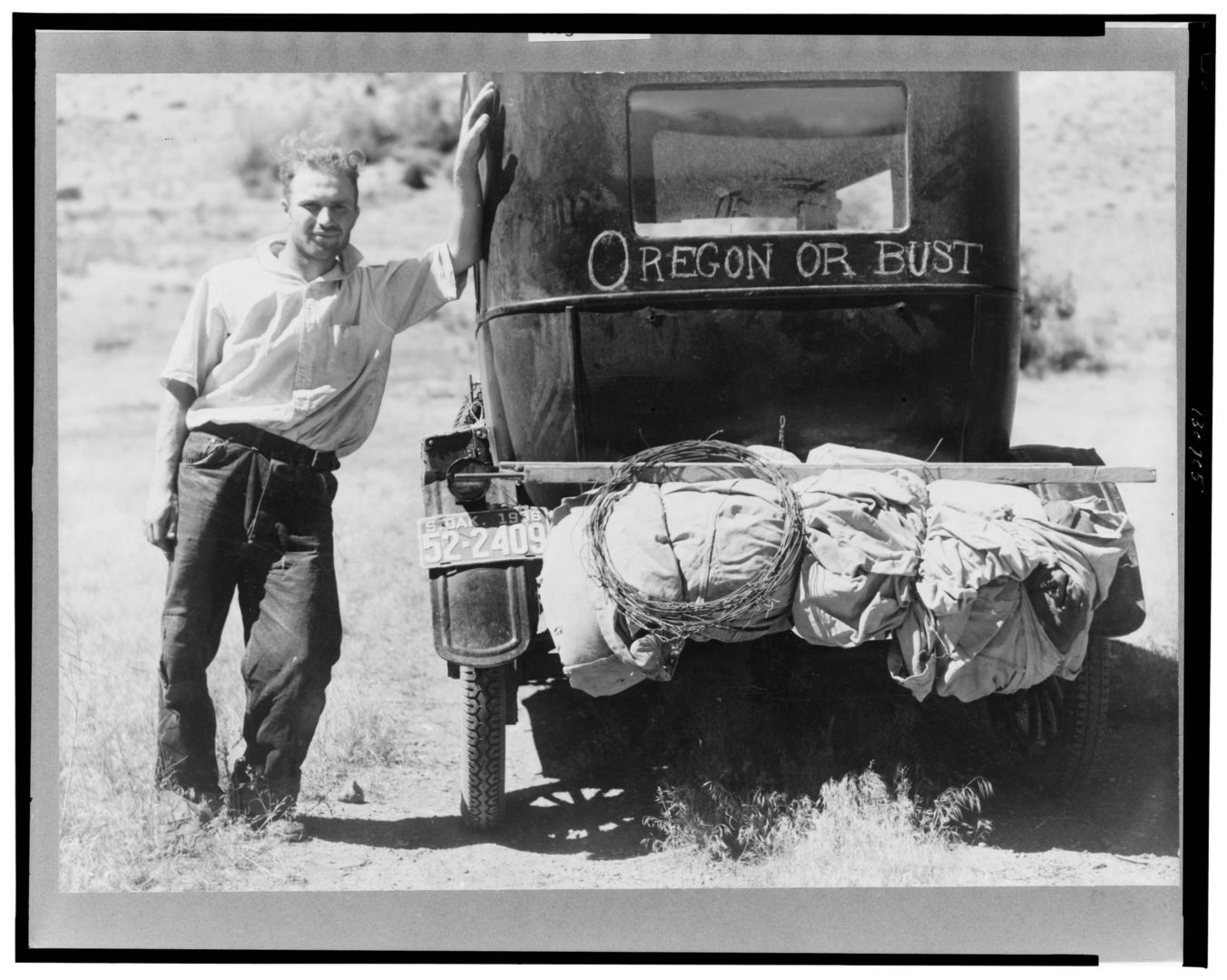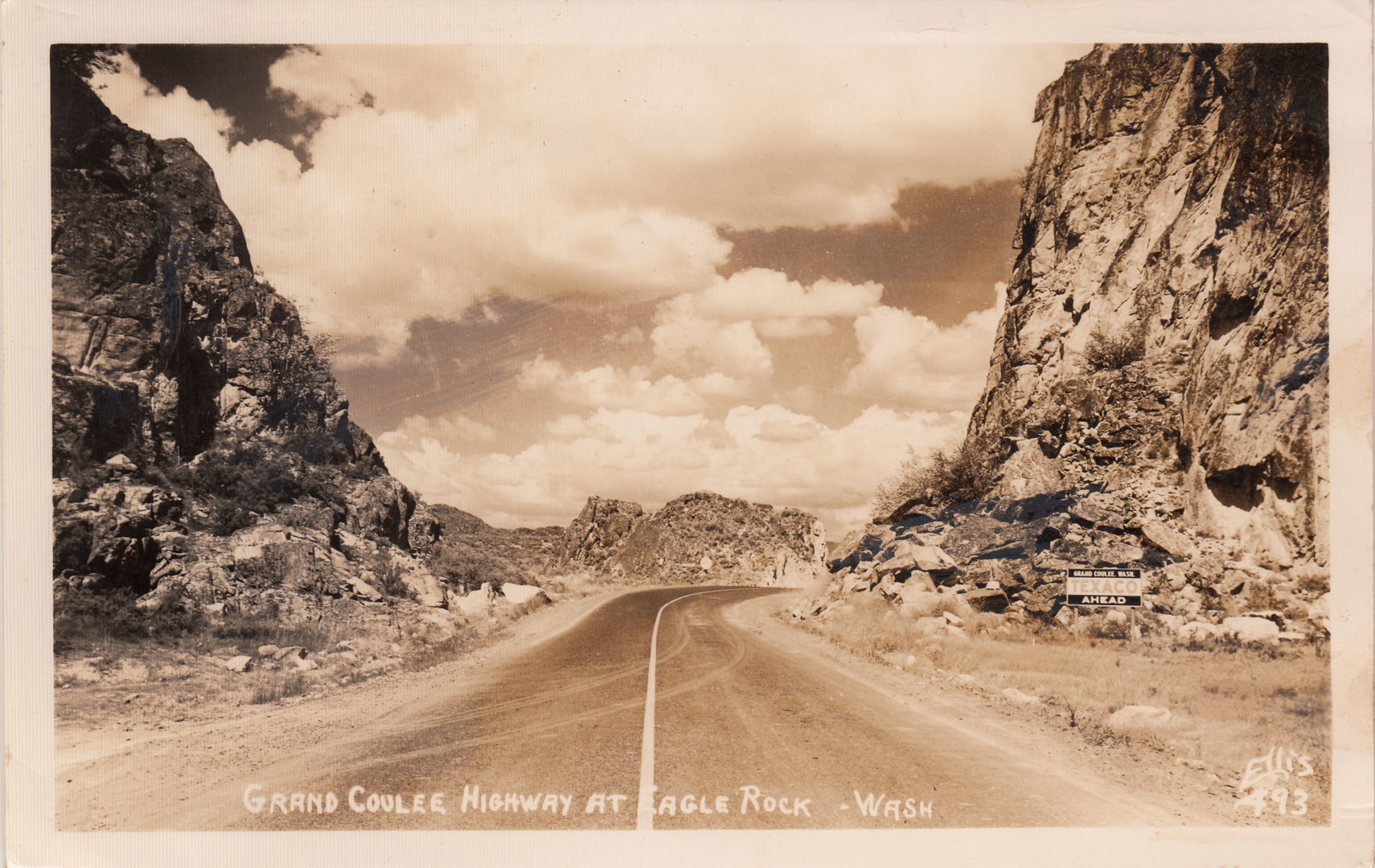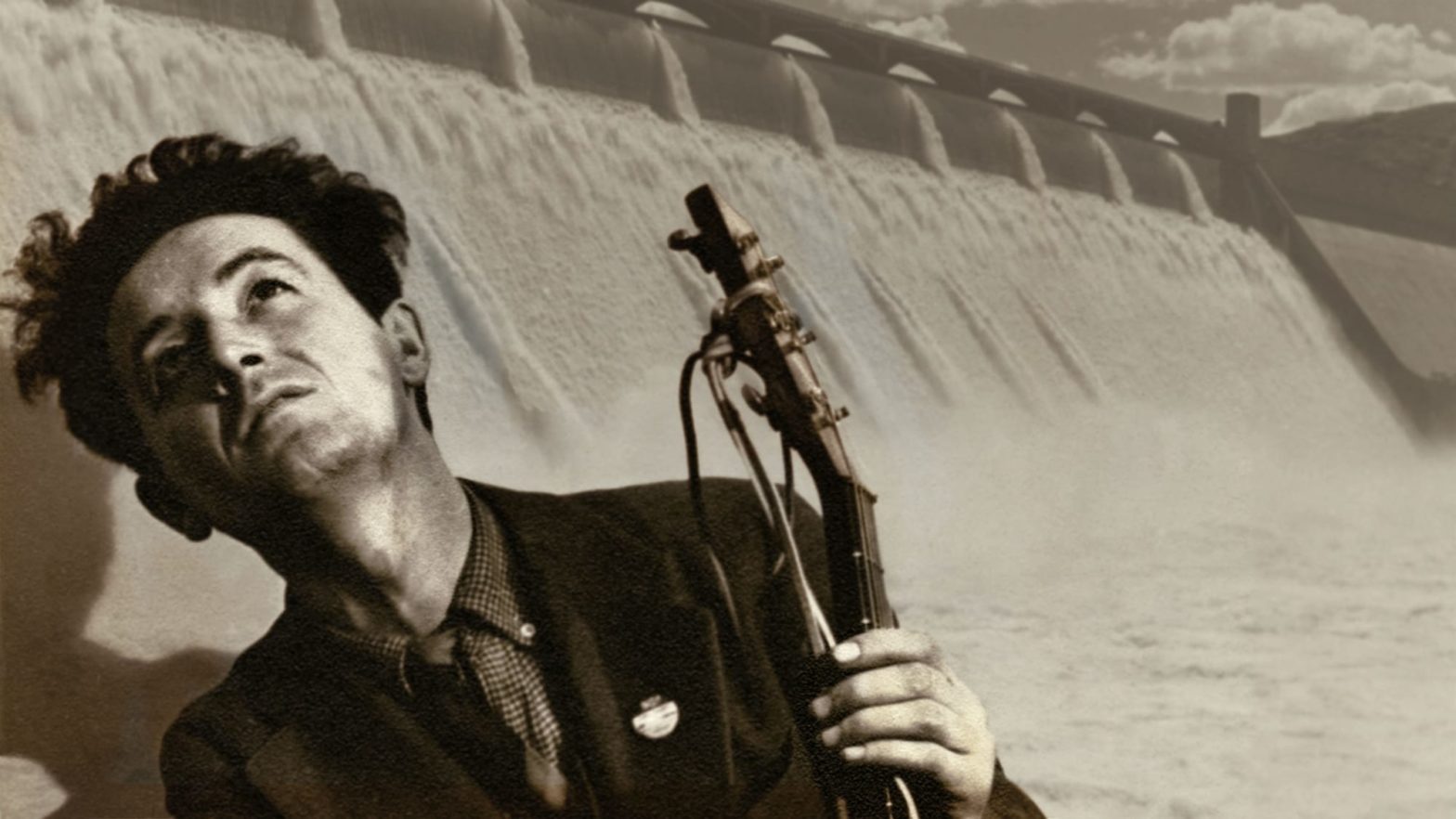A New Promised Land
In May of 1941, Woody Guthrie was hired by Stephen Kahn of the Bonneville Power Administration to write folk songs for a new film called The Columbia. The government documentary would promote the benefits of cheap hydro-electric power, irrigation, and land reclamation from a huge public works project on the Columbia River featuring the Bonneville and Grand Coulee dams.

The ambitious New Deal planners and America’s most topical songwriter would team-up in an effort to create a “a new promised land” in the Pacific Northwest. It was ambitious, unlikely, and part of a big optimistic dream to help “the people” in the midst of the Great Depression. It was a very unique time in American history, punctuated with utopian dogma, progressive politics, and a new brand of “Americanism” that emphasized the “cultural wealth” of average citizens. It was the beginnings of an American folk revival as a response to hard times.

As a temporary employee, Woody Guthrie was assigned to write a song-a-day. He wrote 26 in 30 days. It was a patriotic opportunity for a man not remembered as particularly patriotic. It was a fight against powerful, private interests, the kind that Woody fought all his life. It was a month of structure for a man who was terribly unstructured. And it resulted in a prolific period of songwriting by a man who helped define our American identity with songs remembered for generations. In 1941, Woody Guthrie was motivated by many of the same things that concerned any migrant dust bowler: unemployment and a brighter future. He considered this project on the Columbia River as an opportunity to improve both. Not just for himself, but for everybody in this great big land.
Ramblin’ ‘Round was likely written prior to Woody’s BPA experience. Guthrie describes the destitute situation of the unemployed during the Great Depression and the plight of Dust Bowl refugees who were forced to migrate and “go ramblin’ ’round” looking for work. There’s mention of the New Deal agricultural strategy of the 1930s to pay farmers not to harvest in order to stabilize prices. The melody is another adaptation on Lead Belly’s “Good Night Irene.” Sometimes Guthrie repurposed bits and pieces of music unconsciously, as is historically the case for many folk and blues artists.
One of the first songs Woody Guthrie wrote upon arriving in Portland in May of 1941, it’s the defining ballad in his Columbia River song cycle. He briefed himself on the area even before arriving by reading road maps and pamphlets representing a “cardboard history” of the Northwest. Once hired, Guthrie was provided reading materials including a book on the history of the local “Indian wars,” featuring a US Army general named Phil Sheridan. Over time, Guthrie edited out racially insensitive caricatures and politically incorrect references in the song that also commemorates Memaloose Island, a sacred Native American burial site. The use of “Good Night Irene” is an example of Guthrie’s ability to repurpose familiar melodies in entirely new ways. An anthem to public power and named the official Washington State folk song in 1987, it has become one of Guthrie’s most recognizable songs.
“Pastures of Plenty” is one of Guthrie’s most celebrated songs and one of the greatest folk songs ever written. It’s a ballad about migrant workers and the promise of turning unusable land into an agricultural bread basket in the Columbia Basin. A direct response and/or answer to his earlier Dust Bowl ballads, this song was recorded along with two other Columbia River songs for The Columbia film soundtrack in New York in 1942. The minor key Guthrie used in this setting added greatly to the stark nature of the scenes of drought-stricken Dust Bowlers. The later and more familiar version Guthrie recorded with Moe Asch in a major key features a slightly up-tempo rhythm and harmonica, which dramatically changes the tone of the song from a “brooding melody” capturing the melancholy of the migrant dilemma into a more positive tune about the hope of irrigation for Dust Bowl refugees. One of the most popular compositions in the Guthrie catalog, it remains as one of the most frequently recorded Columbia River songs and continues to stand as an enduring anthem for social change.
Hard Travelin’ was written in 1940 at the apartment of Harold Ambellan and Elizabeth Higgins at 31 East Twenty-First Street in New York City’s Flatiron District and later submitted to the BPA. Considered a Columbia River song although it has no mention of dams, irrigation, or electricity, Woody clearly used it to meet his song-a-day requirement. One of the most recorded songs in Woody’s catalogue, it was a favorite during the folk revival of the early ’60s. The song title also became a phrase in the folk lexicon to separate folksingers who had lived it, like Woody, and the new urban folksingers who hadn’t.
Guthrie wrote his first “Jackhammer Blues” in 1940 while observing jack- hammering outside his New York City hotel room, as he cites in the BPA manuscript. That song, which imitates the sound of a jackhammer and was never recorded (it appears in The Nearly Complete Collection of Woody Guthrie Songs), is a completely different song than this Columbia River version, which he later recorded commercially for Moe Asch and renamed “Jackhammer John.” This song is an ode to the hard work and rough-and- tumble lifestyle of the men who built the dams.
by Greg Vandy


